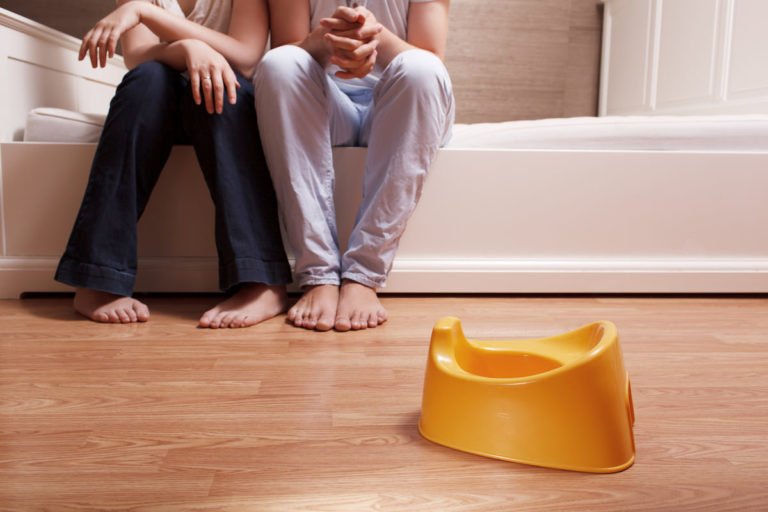
If you were to poll hundreds of parents, results would likely show that toilet training kids is one of their least favorite parental responsibilities. Add in a child with developmental delays, and the challenges and frustrations increase. Even under the best circumstances, toilet training can be a struggle, but there are methods to make it less traumatic for everyone in the family.
Challenges and opportunities for ASD toilet training
Many families use Applied Behavioral Analysis (ABA) techniques when they toilet train their children where positive behavior (staying dry, using the toilet) is abundantly reinforced through rewards while rewards are withheld when undesirable behaviors (not using the toilet to void, not wiping or washing) occur.
The success rates of “rapid” or “fast-track” toilet training methods have inspired many families since Toilet Training in Less Than a Day was published in 1974, a book describing the toilet training method of psychologists Nathan H. Azrin and Richard M. Foxx who developed their strategy for children with disabilities. They reported that of the 34 children who used their method in a test phase, the average child trained in 3.9 hours and had a 97% decrease in accidents the week after training. In another study, Azrin and Foxx’s method was tested against the toilet training technique supported by notable pediatrician Dr. Benjamin Spock and it also had better results.
Toilet training can be a difficult process to get through. Throw out any expectations you have and the pressure to adhere to any milestones that any other child in your life hit, because each child’s toilet training journey is entirely unique. The secret is there is no magic bullet to predict how a child will react to toilet training, and there is not one strategy that is guaranteed to work for every child. However, here are our top tips to consider when developing a toilet training plan for your child.
7 Tips for Toilet Training Success
1. Look for signs your child is ready for toilet training.
Since every child develops on a different timetable, there is no sense in pushing a child to toilet train if they aren’t ready. Here are some things to consider:
- Does the child follow one-step directions?
- How does the child communicate? Verbally, sign language, other?
- Can the child remain dry for long periods? Have they shown they can “hold it”?
- Have you seen signs such as squatting or pulling at the pants that indicate they are urinating or having a BM?
- Is the child able to pull pants up and down unassisted?
- Can the child sit and stay on a toilet for a few seconds?
If you were able to answer “yes” to many of these questions, it’s likely time to begin toilet training.
2. Toilet train when there are few distractions and you can commit to an extended time period.
Select a time to start toilet training where there will be minimal distractions and activities. If your child is in daycare or school, be sure staff are also on board. Toilet training has a higher chance of succeeding when there is full immersion into the process by all involved. Be sure you are consistent in your toileting terms and make sure your child understands what the words mean.
3. No diapers or pull-ups should be used.
Since diapers or pull-ups whisk away moisture, they should not be used when you are toilet training, except for overnight. It’s important that the child feels wetness when they soil their pants. You don’t want to send the message that it’s OK to urinate anywhere by allowing a pull-up to be used.
4. Use positive reinforcement.
If the child is dry during checks or urinates or has a BM in the toilet, be sure to celebrate and give out rewards. Figure out what is exciting for your child as positive reinforcement. Some kids love a high five while a favorite piece of candy such as M&M’s works better for others. You might also want to consider a bigger reward for successful BMs since that is typically harder for children to consistently master.
5. Track toilet training data.
Use data collection to help monitor your child’s progress and gain insight for what might need to be altered with toilet training. There are several toilet training tracking charts and apps available with spots to document the day, time, outcome of toilet visits and dry checks.
6. Visual schedules to show the steps in the toileting process
Visual checklists can be very helpful during the toileting process to show the order of the steps that must be taken every time when toileting. By posting a visual schedule, you can encourage your child’s independence because they can refer to the visual cue instead of asking their parent every time about what to do.
7. Once child self-initiates, you can step back.
The parent scheduling of bathroom visits should stop once a child self initiates a trip to the bathroom according to the training guidelines outlined by Azrin and Foxx to encourage the child’s independence and prevent a child from becoming reliant on the parent to be told when it’s time to go.
While there are other protocols for “rapid” or “fast-track” toilet training, this sample toilet training plan is culled from Azrin and Foxx’s method described in Toilet Training in Less Than a Day.
Toilet training is a journey for every child and family. For most children, learning how to use the toilet to urinate is the first step in potty training. Bowel training typically takes longer. While there is no one-size-fits-all approach, ABA technology provides ample strategies to see you through success.
If your family needs support setting up a toilet training program, the Pocket Coaching services at Psyched Services can help. Please contact us for a free consultation.
What problems have you experienced with toilet training your child?





